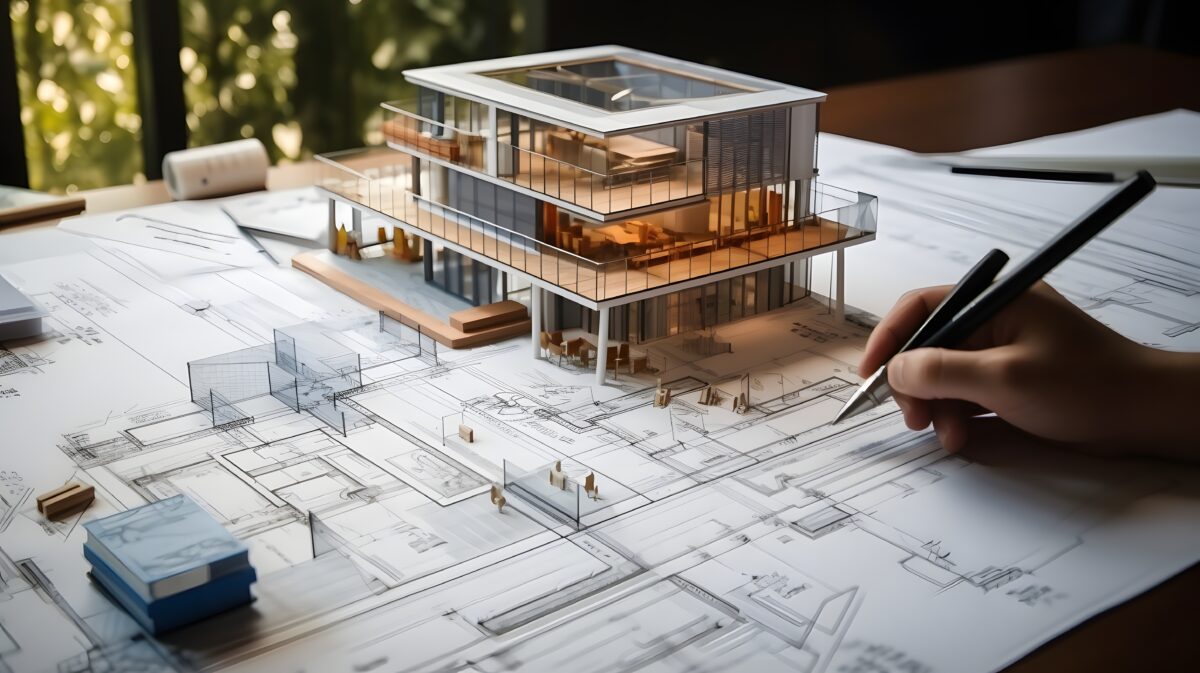
In the fast-paced world of architecture, engineering, and construction (AEC), innovation is the key to winning more clients. Artificial intelligence (AI) is quickly stepping in as a hidden hero, quietly transforming the design process. What once required a team of designers, AI tools are helping companies generate better and more precise designs while streamlining workflows.
By predicting outcomes, optimising building designs, and automating mundane tasks, AI is reshaping how we approach every project—making it feel as if you have an entire team working tirelessly at your side. The result? Smarter, faster, and more sustainable designs.
AI excels at automating routine tasks, allowing you to focus on more complex and creative aspects of design. Through machine learning algorithms, it can automatically process huge amounts of data, conduct analysis, and generate alternative designs, effectively cutting down the time spent on manual tasks and removing the need for extra resources on projects.
Automation also helps in streamlining your design processes. By automatically generating and applying templates, pre-built elements, and style guides, you can achieve consistency across your design projects. Plus, you can streamline workflows within BIM software using AI, automating tasks like resource management, allowing designers to focus more on refinement.
AI-powered tools can process parameters such as site orientation, climate, and materials, delivering you better insights into how buildings can optimise natural light, ventilation, and energy use.
Moreover, it can help in calculating the environmental footprint of construction materials and predict how a building will perform under different environmental conditions. By utilising real-time data, AI ensures that sustainable principles are integrated from the earliest design stages through to completion.
AI can improve accuracy while minimising human error in data entry, analysis, and other processes. It can analyse trends and patterns to provide feedback and analysis, helping you to adjust operations or foresee issues in real time. This improved accuracy is crucial in the AEC industry, where precision is critical for safety and regulatory compliance.
AI systems can quickly and accurately analyse vast amounts of data, providing insights that better inform your decision-making. In the AEC industry, this feature allows designers to make data-driven decisions and leads to better design solutions. By processing historical trends and data, AI can predict potential challenges and suggest optimal solutions to improve the design process.
AI-powered visualisation tools let you work with advanced 3D models before construction begins. This immersive experience helps significantly in finding design flaws and assessing spatial relationships, helping to manage the risk of costly variations during construction. Furthermore, advanced simulations can predict how designs will perform under various conditions, which is an invaluable insight into the durability and functionality of your design.
Generative AI design tools help architects and engineers explore design alternatives based on parameters such as materials, site conditions, and environmental factors. For example, AI tools can analyse complex datasets to propose designs that balance aesthetic appeal with structural integrity and sustainability. You’ll be able to shorten the design period while producing innovative designs that might not be possible using traditional design methods.
AI can identify cost-reduction opportunities and suggest efficient use of your resources by studying data from your past projects. This optimisation leads to significant savings and waste reduction while helping to deliver more sustainable construction practices. AI’s ability to predict and mitigate potential issues before they arise means you will save money, labour, and other resources, making your projects more profitable.
Modern AI software can handle repetitive tasks, reduce errors, improve design quality, and save time and costs. By leveraging AI technologies, AEC companies can achieve more accurate designs, allocate resources better, gain insightful analytics, and improve overall project outcomes, giving them a competitive edge in the market.
At 3 Dot Digital, we’ve worked with many companies in the AEC sector and would love to transform your manual design processes. We’re here to guide you in adopting AI automation solutions, so do reach out to us to unleash the power of AI design automation.